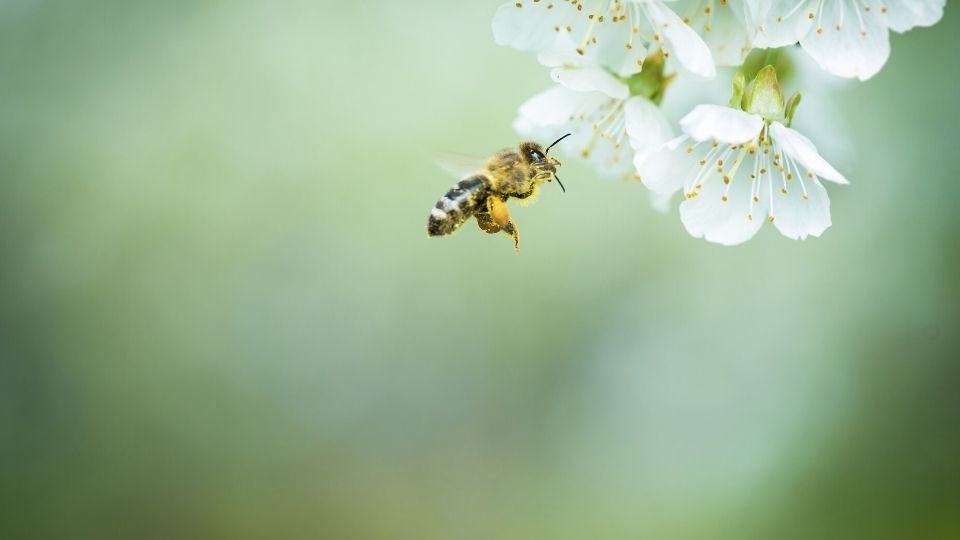How Scent Affects Honey Bees (And Why It's Important)
It’s well known that olfaction (sense of smell) is important to bees.
But just how important is it? And how can beekeepers leverage an understanding of the concept to better their colonies?
There’s a saying in biology that “structure determines function.” Researchers often begin studying something novel by looking at its structure and making predictions about its relevance to the organism.
We largely know that a bee’s sense of smell is important based on its anatomy. A 2006 study discovered that honey bees (Apis mellifera) have a lot more odor receptors than their fellow insects — 170 receptors in honey bees compared to 62 in fruit flies and 79 in mosquitos.
(Surprisingly, the same study found that a bee’s sense of taste is worse by comparison.)
Not only is the honey bee’s sense of smell stronger than most other insects’, but it is about 100 times more sensitive than humans’. Their sense of smell is so strong, in fact, that some medical researchers have used it to sniff out diseases like cancer and diabetes.
What purpose does this heightened sense of smell serve the colony? It’s improbable that we have discovered them all (or ever will), but here are a few demonstrated examples:
Locating pollen- and nectar-rich flowers
Recognizing kin through pheromones
Communicating tasks within the hive
(Quick definition: A pheromone is any compound with a signal function that is produced by an animal.)
Honey bees have 170 odor receptors, compared to 62 in fruit flies and 79 in mosquitos.
Beeswax and Scent
Even humans, with 1% of the smelling power of bees, grasp the attractive scent of beeswax.
Look no further than the existence of pure beeswax candles.
Most beekeepers have heard to coat their foundations with beeswax. The reason being, honey bees are generally indifferent about a plain piece of plastic in their hives, so the beeswax serves to entice the bees to draw out comb on the foundation.
What is it about beeswax that allures bees? And are there differences in the types of beeswax and how it’s accepted?
Looking at it from a biologist’s perspective, beeswax is an important material to the survival of a colony. It’s also expensive — a single pound of wax involves the work of roughly 450 bees.
Considering the value of beeswax, it makes sense that bees have developed a strong ability to identify it. It is through their keen sense of smell that they detect beeswax and determine what to do with it.
(Side-but-related note: The scent of beeswax is commonly used as bait to attract swarms of bees; further evidence of its powerful effect, even from miles away.)
From a chemist’s perspective, beeswax is like a natural sponge: it soaks up many of the compounds it comes into contact with. Over time, these contaminants wear down the fresh hive scents emitted from the beeswax. Notice, for instance, how darker comb wax has a weaker scent than fresh capping wax. If you can smell the difference, your bees will notice it 100 times!
All of this is to say, the quality of the wax you apply to your foundation is just as important, if not more, as the quantity. We have established that scent is the most important factor of beeswax in enticing bees to draw comb on a foundation. It follows that this scent must be potent — the right kind of potent, with the right properties — to trigger worker bees to begin drawing comb.
The cleanest, most fragrant beeswax is the wax that has spent the least amount of time in the hive: cappings. The capping wax is the freshest available and absorbs fewer contaminants brought on by the bees’ feet.
Iowan beekeeper Marlene Boernsen removes wax cappings from a super frame with a heated knife.
Candlemakers use only wax from cappings as it looks the cleanest and emits the strongest fragrance.
At Premier Bee Products, we know how important the quality of beeswax is to a colony, which is why we also coat Premier Foundation with 100% pure capping wax. The strong, fresh scent is picked up by the bees’ olfactory receptors, triggering their glands to produce wax for the hive. Not to mention, the purity of the beeswax ensures further protection from the exposure to toxins — As bees forage, they collect things like pesticides and bring them back to the hive. While they trample about, the comb absorbs these toxins and turns dark in color.
As a beekeeper, your duty and privilege is to grow in your understanding of these little creatures and their environment. More important is what you do with this knowledge in practice.
We hope this knowledge of scent’s effect on honey bees is valuable and encourages you to incorporate organic, naturally fragrant products in your hives.
Doing so will restore the well-being of your colonies and spark in them a productivity like you’ve never seen before.


